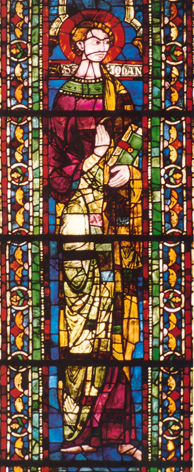Ruta de navegación
agenda_y_actividades_conferencias_2008_tecnica-vidriera
12 March 2008
Global Seminars & Invited Speaker Series
DECORATIVE ARTS AND ARTISTIC TECHNIQUES
The stained glass technique: an art of fire
Dr. Víctor Nieto Alcaide.
Full Professor of the UNED of Madrid and Academic
The technique, the procedures followed by the artists in the realisation of the various arts, play a fundamental role in the final result of the work. However, in stained glass, as an art of fire, the incidence of technique plays a special role. Stained glass is a translucent art, made up of coloured glass assembled with a network of leads. The glassmaker has a limited palette of colours made up of glass whose colour is in its mass, on which he paints shadows, features, signs or decorative motifs with grisaille. It was not until around 1300 that silver yellow appeared, which made it possible to enrich the glassmakers' palette and to be able to apply different colours to a single piece of glass. In a 13th-century stained glass window, to make a head, the master needed two pieces of glass, one for the face and the other for the yellow hair. With the silver yellow it was possible to do it with only one, since for the hair it was not necessary to use another glass of this colour, but it could be painted with the silver yellow.

Anonymous, "San Juan", c.a. 1200-1220. conference room Capitular, Monasterio de las Huelgas, Burgos.
From the 11th century, the technique of stained glass was systematised by the monk Theophilus in his treatise Diversarum Artium Schedula. In it he describes the different operations that must be followed to make a stained-glass window: drawing the cardboard, adapting the glass to it by cutting it into different pieces, painting the glass with grisaille, firing it, leaded glass and setting it. These are operations which have remained unchanged over the centuries and which are still in use today, even when new processes have appeared. Stained glass is not simply a painting applied to a glass support. It requires the mastery of procedures that form a language of its own in which technique is an essential instrument of creation.
